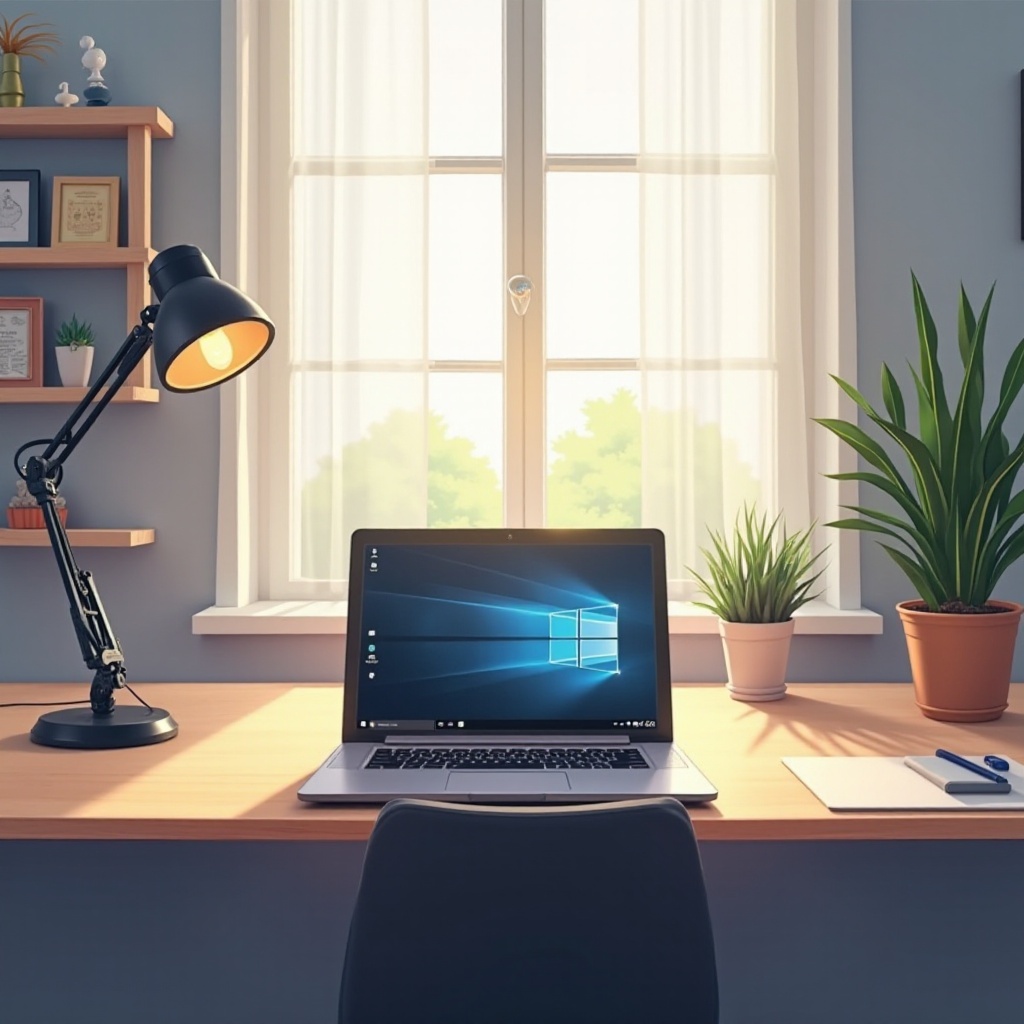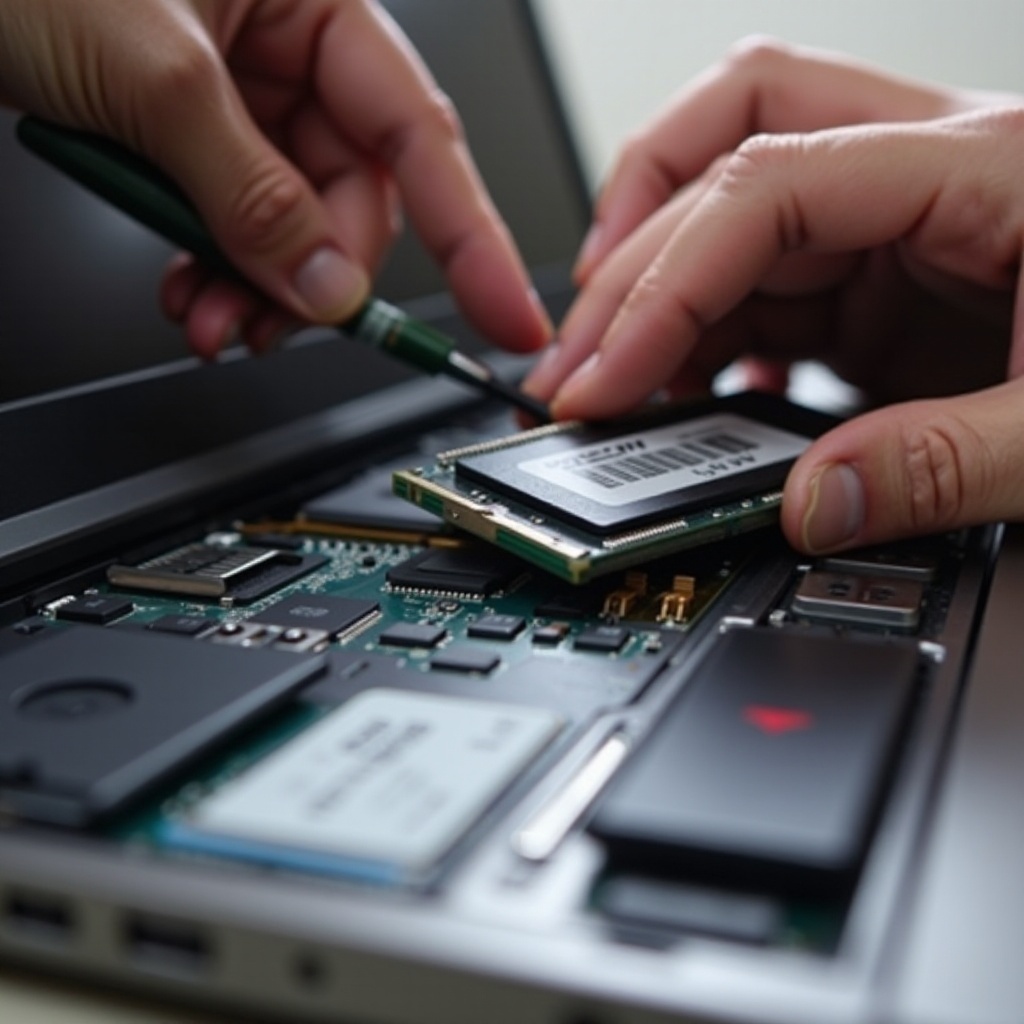Introduction
Lenovo laptops are favored for their reliability and impressive performance. However, like any other device, they may slow down over time, impacting your productivity and user experience. Whether it’s delayed boot times or applications taking forever to load, it’s crucial to enhance your laptop’s performance periodically. In this comprehensive guide, you’ll learn how to detect underlying performance issues, apply quick software modifications, explore hardware upgrades, and adopt advanced optimization techniques. These strategies ensure that your Lenovo laptop remains fast and efficient, providing a seamless computing experience.

Identifying Performance Issues
To initiate the process of speeding up your Lenovo laptop, identifying the root causes of its sluggishness is the first step. Evaluate your laptop’s current performance by checking if it’s running too many applications simultaneously or if the hard drive is nearly full. Use the Task Manager to identify resource-intensive applications that might be dragging down your system’s speed. Moreover, listen for any unusual noises or watch for overheating signs as they might indicate potential hardware problems. Pinpointing specific issues allows you to apply more targeted and effective solutions.
Quick and Easy Fixes to Speed Up Your Lenovo Laptop
Addressing simpler performance issues can lead to considerable speed improvements, setting the stage for further optimization.
-
Free Up Disk Space: Start by uninstalling unnecessary programs, clearing out temporary files, and emptying the recycle bin to reclaim disk space instantly.
-
Reduce Background Processes: Close applications and browser tabs you’re not actively using, and disable background programs to free up resources for more critical tasks.
-
Restart Regularly: Regular restarts clear memory leaks and stop non-essential applications, offering a quick and straightforward speed boost.
Implementing these basic adjustments will help resolve common hindrances, priming your laptop for more in-depth optimizations.

Optimizing Software and Settings
After tackling immediate issues, additional enhancements can be achieved by fine-tuning software settings.
Adjusting Windows Power and Performance Settings
Adjusting your power settings is a simple way to enhance performance. Shift from ‘Balanced’ to ‘High Performance’ mode to prioritize speed over energy savings. Access this setting by going to ‘Settings’, selecting ‘System’, then ‘Power & sleep’, and finally clicking ‘Additional power settings’.
Managing Startup Programs
Speed up your Lenovo’s boot times by managing startup programs. Use Task Manager’s ‘Startup’ tab to disable programs that don’t need to launch on startup, freeing up system resources for smoother operation.
Regularly Updating Software and Drivers
Keep your system current by installing the latest Windows and driver updates. Updates can improve compatibility and system stability. Visit Lenovo’s official site for model-specific driver updates to ensure your laptop is always running the most efficient software versions.
These software optimizations enhance your laptop’s responsiveness, setting the foundation for more significant performance improvements through hardware upgrades.
Hardware Upgrades for Enhanced Speed
To achieve more substantial speed improvements, consider upgrading your laptop’s hardware components.
Increasing RAM
Boosting your laptop’s multitasking capabilities can be as simple as increasing its RAM. Many Lenovo models support RAM expansion, which can significantly enhance application performance and overall system responsiveness.
Upgrading to a Solid-State Drive
Replacing a standard hard drive with a Solid-State Drive (SSD) offers remarkable speed advantages, including faster boot times and swifter data access. SSDs improve reading and writing speeds significantly, reducing load times across various applications and tasks.
While these hardware upgrades involve a greater effort and cost than software tweaks, they yield substantial, long-term performance benefits that justify the investment.

Advanced Maintenance and Optimization Tips
Sustaining top-level performance requires ongoing maintenance and advanced strategies.
Regular Cleanup and Disk Maintenance
Conducting regular disk cleanups and defragmentation (for HDDs) is essential to maintain disk efficiency. Utilize built-in tools like Disk Cleanup to eliminate unnecessary files, maximizing available storage space for optimal functionality.
Using Lenovo Vantage for System Optimization
Leverage Lenovo Vantage, an official tool tailored to enhance performance through system updates and hardware diagnostics. It offers user-friendly solutions specifically designed for Lenovo products, ensuring efficient device management.
Employing Third-Party Optimization Tools
Consider reputable third-party optimization tools, such as CCleaner, to manage junk files and your system registry effectively. These tools provide added layers of cleanup and maintenance, ensuring smooth laptop operation.
By integrating these advanced maintenance strategies with quick fixes and software optimizations, you create a robust system for maintaining optimal laptop performance.
Conclusion
Enhancing your Lenovo laptop’s speed is a multifaceted process involving immediate fixes, sophisticated software tweaks, and deliberate hardware upgrades. Regular maintenance, matched with Lenovo’s specialized tools, can keep your device running at peak capacity. Following these proactive steps ensures your laptop continues to meet both your current and evolving computing needs efficiently.
Frequently Asked Questions
How often should I perform maintenance on my Lenovo laptop?
Regular monthly checkups for software updates and disk cleanup are advisable, with in-depth maintenance every 3-6 months for optimal performance.
What are the risks of upgrading my laptop’s hardware?
While upgrading RAM or installing an SSD can boost performance, improper installation may void warranties or damage components. Consult Lenovo support or a professional for assistance.
Can third-party tools harm my Lenovo laptop?
Most reputable third-party tools are safe and improve performance, but those from dubious sources can be harmful. Use well-reviewed applications and backup your data before installing new software.